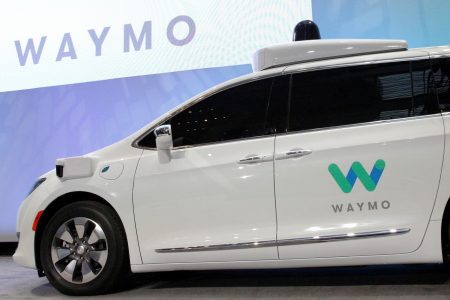November 9, 2017 – Every year Stratford, Ontario, hosts a Shakespearean festival that features the playwright’s many works plus other contributing plays and musicals. A quiet city of 31,000 people, it features an Avon River with white swans, leafy-treed parks, and picnic tables. Modernity isn’t something you would normally associate with Stratford which often appears to be a step back in time, bearing resemblance to a Currier & Ives postcard. But underneath all of that mid-last century charm is a city orienting itself to the 21st century and embracing the disruptive technology that is driving significant change.
This week the Ontario provincial government announced that Stratford will be a test bed not just for autonomous vehicles which will be featured on its streets, but will also include vehicle-to-city-infrastructure communications, turning it into a “smart city.”
Ross McKenzie, Managing Director of the University of Waterloo’s Centre for Automotive Research calls Stratford, the “perfect microcosm” for autonomous vehicle technology. It features a secure, city-wide wireless network where vehicle-to-vehicle, vehicle-to-infrastructure, and vehicle-to-the-cloud communication can be tested.
Stratford, the smart city
What makes Stratford a “smart city?” With 50 kilometers (31 miles) of fibre optic cable and a network of wireless antennas in place, the city invites experimenting with technology and analyzing the harvested data. And although there is no agreed to definition for a “smart city,” urban centres given this designation create urban ecosystems that are connected. Connection means the static and moving parts of the city can talk to each other.
Part of the Stratford initiative will outfit the city’s fleet of service trucks and cars with components from manufacturers to provide real-world situational feedback. Autonomous vehicles will be tested first at a 1.7-hectare (4.2 acre) site and not on public roads.
A big part of the Stratford test will be evaluating autonomous technology in snow conditions. Stratford gets about 244 centimeters (8 feet) of snow every winter, and giving autonomous vehicle “snowtonomy” is one of the last bars the technology needs to clear before it can become ubiquitous on urban and rural roads. The challenges are many. The software needs to be capable of detecting a range of changing visual as well as traction and steering conditions. The current radar, high-resolution cameras, and lidar work fine in most situations but what happens when the road’s visual markings are buried under a blanket of snow and ice?

So when will autonomous vehicles become common on city streets?
There have been a number of tests of autonomous cars on urban streets in the last year. In all cases, a safety driver was sitting behind the wheel in the event the software and hardware erred. But in the last month, Waymo, the autonomous vehicle division of Alphabet, began operating minivans in Arizona with no human behind the wheel. There is still a Waymo employee in the vehicle but they now are confined to the back seat and not as a back seat driver. The vehicles are operating within a 259 square kilometer (100 square mile) area that is geofenced, in the city of Chandler, a Phoenix suburb.
The industry defines this as Level 4 autonomy wherein a vehicle is capable of driving without a human in most environments. Fiat-Chrysler, Lyft, and Avis, are partnering with Waymo in this initiative. The next step is to begin a commercial ride-hailing service using the minivans.
Waymo has more experience than any other company with autonomous vehicle technology. The company has accumulated more than 5 million kilometers (3 million miles) of testing on city streets, not including the more than 1.6 billion kilometers (1 billion miles) in simulations in 2016 alone. Incidents, where the autonomous technology disengages to have the human on board take over, have dramatically dropped in the last year from 0.8 per 1,600 kilometers in 2015 to 0.2 in the last year.
Forbes recently published an article by Chunka Mui which described Waymo’s successes as “running laps around its competitors.” If any technology is going to get us to ubiquitous autonomy on the road, it appears to be the front-runner.
I’m betting that we will see autonomous vehicles offering commercial ride-hailing services in many cities around the globe by the mid-2020s. And as for the snow problem, better terrain mapping, embedded smart road sensors and ubiquitous WiFi connectivity will solve that as well.
















